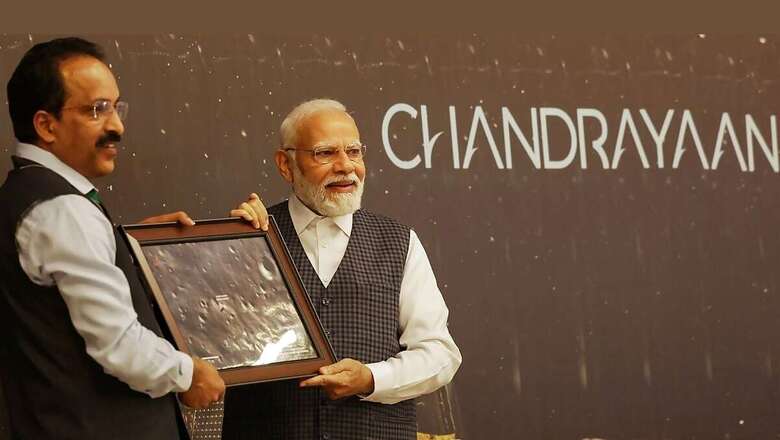
views
Just a year after India successfully landed near the south pole of the moon, the Union Cabinet has approved country’s next lunar mission to bring back samples from the moon. The mission – Chandrayaan-4 — will be realised with a cost of Rs 2,104 crore within the next 36 months.
ISRO will develop a spacecraft for the mission and the total cost will also cover two launch vehicle missions of LVM3, external deep space network support as well as special tests for design validation finally leading to the mission of landing on the lunar surface and safe return to Earth along with the samples.
It would make everyone proud that Chandrayaan-4 has been cleared by the Cabinet! This would have multiple benefits, including making India even more self-reliant in space technologies, boosting innovation and supporting academia. https://t.co/ZWLMPeRrYh— Narendra Modi (@narendramodi) September 18, 2024
Prime Minister Narendra Modi in a series of posts on X wrote: “It would make everyone proud that Chandrayaan-4 has been cleared by the Cabinet! This would have multiple benefits, including making India even more self-reliant in space technologies, boosting innovation and supporting academia.”
He added: “Great news for the space sector! The Union Cabinet has approved the first step towards the Bharatiya Antariksh Station (BAS), expanding the Gaganyaan programme! This landmark decision brings us closer to a self-sustained space station by 2035 and a crewed lunar mission by 2040!”
Glad that the Cabinet has cleared the Venus Orbiter Mission. This will ensure more in-depth research to understand the planet and will provide more opportunities for those working in the space sector.https://t.co/nyYeQQS0zA— Narendra Modi (@narendramodi) September 18, 2024
This will eventually bring the Indian Space Research Organization (ISRO) closer to its 2040 target of sending an Indian astronaut to the moon by 2040, and bring him/her safely back to Earth. According to the government, the project will be completed within the next 36 months of approval with the participation of industry and academia.
The mission will have multiple launches and ISRO will develop the spacecraft and launch requirements.
“This mission requires different technologies that can enable us to escape the gravity of the moon, orbit around it, and then re-enter the Earth without getting burnt off. This is very challenging. But we need to develop this capability if we have to send a man to the moon by 2040,” the ISRO chairman S Somanath had said.
Great news for the space sector! The Union Cabinet has approved the first step towards the Bharatiya Antariksh Station (BAS), expanding the Gaganyaan programme! This landmark decision brings us closer to a self-sustained space station by 2035 and a crewed lunar mission by 2040!…— Narendra Modi (@narendramodi) September 18, 2024
ISRO will launch a space-docking experiment to develop its capabilities for the challenging endeavour. The test called SPADEX – Space Docking Experiment — involves two mini-satellites which will be injected into two different orbits. The task is to bring them closer enough to connect again to be able to transfer objects in space.
ISRO is keen to further continue with its Chandraayan series of missions to further explore the moon. India also plans to set up an Indian Space Station (Bharatiya Antariksh Station) by 2035 and successfully achieve an Indian landing on the moon by 2040. The targets will require a series of Gaganyaan and Chandrayaan follow-on missions, including the development of associated space transportation & infrastructure capabilities.
India's space ambitions take yet another important leap with the approval of the Next Generation Launch Vehicle (NGLV)! This will bring us closer to establishing the Bharatiya Antariksh Station and achieving a crewed Moon landing by 2040.https://t.co/G2GExuQIyy— Narendra Modi (@narendramodi) September 18, 2024
“A natural successor to the successful landing mission is the demonstration of the ability to collect lunar samples and return them safely back to Earth. ISRO will be responsible for the development of spacecraft and launch,” said the Cabinet on Wednesday.
All the critical technologies will be indigenously developed. However, there would be a significant involvement of Indian industry. This mission will also ensure the establishment of facilities for curation and analysis of the returned samples, which will be national assets.




















Comments
0 comment